Echoes Within captures the hidden mind, stirred by intangible emotions. The artist attempts to ground inner turmoil by creating still, contemplative images – tangible landscapes where the mind can rest, contrasting with the elusive, fleeting nature of subconscious thoughts and feelings. Yet encountering these images is not a silent experience. The viewer is confronted with their own emotional responses, sparking an inner dialogue and sending them on a personal journey to discover their own interpretation.
"Over the past two years, I have experimented with AI, generating hundreds of images inspired by my own artistic concepts and fantasies. I realised it can be a fascinating tool – like taking a dip into the collective unconscious embedded in the global mind of the internet."
"For Echoes Within, I combined digital techniques with generative tools for the first time, expanding and deepening my artistic process. I selected fragments from AI-generated images, photographs I had taken, and elements of my own vector artworks, cutting and assembling them into layered digital collages. Each piece was then digitally painted over to refine the structure and unify the overall composition."
The works are presented at Heckmann Design Studio Gallery in London (27 March – 4 July 2025) as 420mm x 594mm giclée prints on Hahnemühle Photo Rag, 308gsm paper.
Echoes Within Exhibition
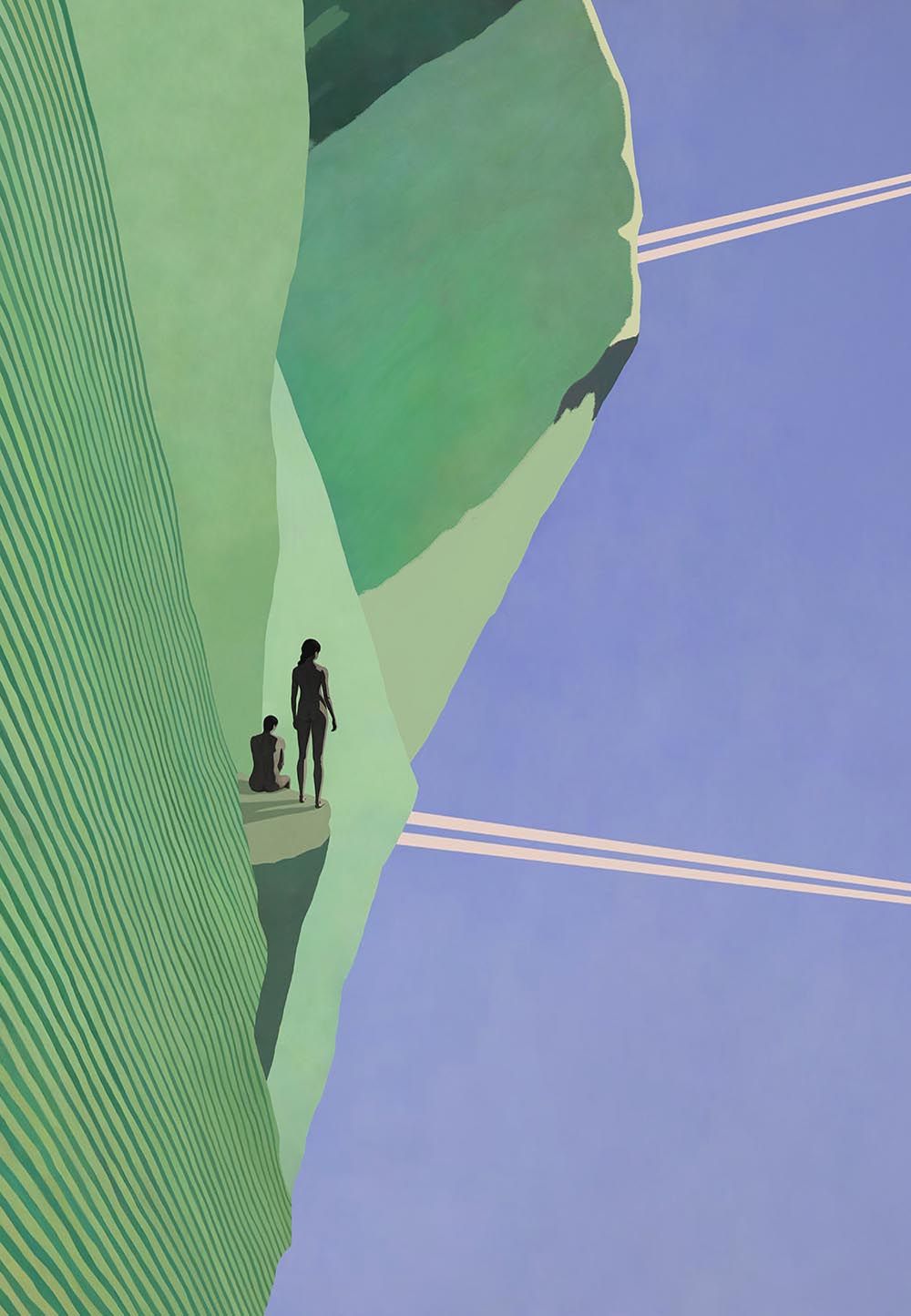
Conspiracy
Conspiracy is a piece that embodies the complex interplay between perception, misinformation, and the fragile human psyche in the digital age.
At the heart of the composition is a reinterpretation of a photograph taken of London’s Tate Modern. This architectural source was processed through an AI tool that transformed it into a surreal, mountainous landscape. The artist then digitally painted over the AI output, integrating human figures and symbolic contrails – colloquially referred to by conspiracy theorists as chemtrails.
Thematically, the work explores the human inclination to interpret the unknown through the lens of suspicion and imagination. The figures, naked and isolated on a narrow rock ledge, evoke a sense of both physical and psychological vulnerability. Their nudity symbolizes exposure: to nature, to the unknown, and to the confusion that arises in the absence of concrete understanding. Stripped of context and modern knowledge, the figures gaze at the contrails, searching for meaning.
These white lines across the sky reference a widely circulated conspiracy theory that suggests governments are secretly dispersing chemicals from aircraft for undisclosed purposes – ranging from population control to weather manipulation. Though scientifically debunked, the chemtrail theory persists, fueled by the ambiguous nature of visible trails and a lack of public trust.
The vertical composition of the piece amplifies the tension and sense of danger, mirroring the precariousness of our grip on reality in the information age. With the internet saturated with competing narratives and disinformation, the viewer is reminded of how easily anyone can become like the figures in the image – exposed, uncertain, and desperate to impose coherence on the incomprehensible.
Conspiracy captures the psychological space between truth and paranoia, where fear fills the gaps left by uncertainty. Through a visually minimalist yet conceptually rich language, the piece challenges the viewer to reflect on their own filters for truth in an age of overwhelming data.
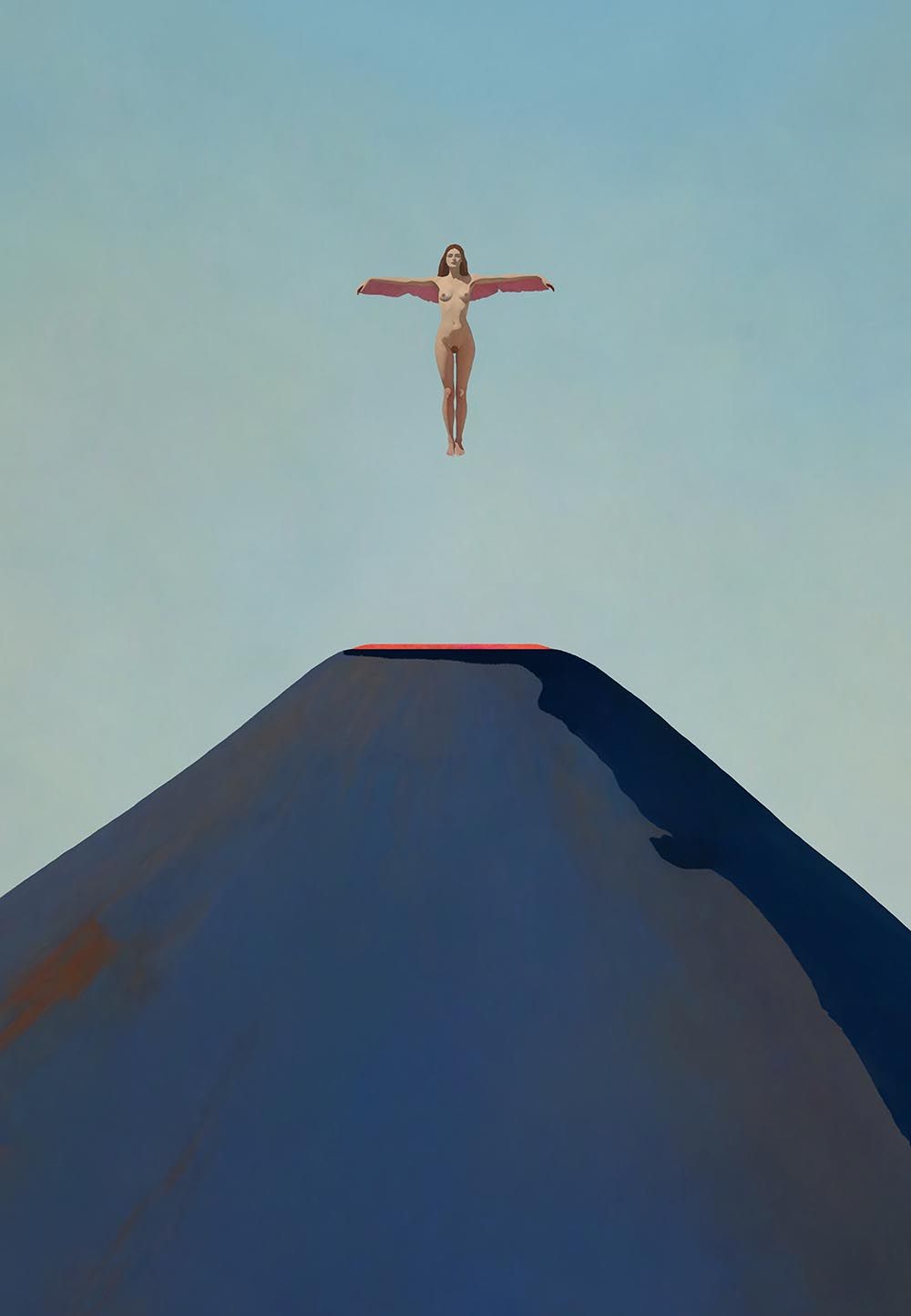
The Resurrection of Icarus
The Resurrection of Icarus is a symbolic artwork that reimagines the myth of Icarus through a feminist and contemporary lens. In the composition, a naked woman with outstretched arms hovers above the glowing crater of a volcano – her body suspended in a pose that echoes both crucifixion and ascension. Her wings, delicate yet vivid, allude to the mythological flight of Icarus, yet this figure does not fall; she rises.
This piece proposes a radical metamorphosis: Icarus is reborn as a woman, not to repeat a tragic mistake, but to defy the ancient, paternalistic narratives that once governed her fate. In this reinterpretation, the volcano becomes a source of life rather than destruction. The magma – a concentrated form of the sun’s energy stored within the Earth – serves as both a literal and symbolic reservoir of power. Where Icarus once perished by flying too close to the sun, this resurrected figure emerges from its earthly echo, empowered and transformed.
The nudity of the figure signals liberation rather than exposure. She is free of shame, free of societal constraint – a symbol of feminine resurgence rising from the depths of a history shaped by masculine authority. This is a resurrection not only of myth, but of identity.
Minimalist in form, the piece draws attention to the magnitude of change taking place. The stark contrast between the subdued sky, the dark volcanic slope, and the radiant central figure places emphasis on the symbolic rebirth unfolding before us.
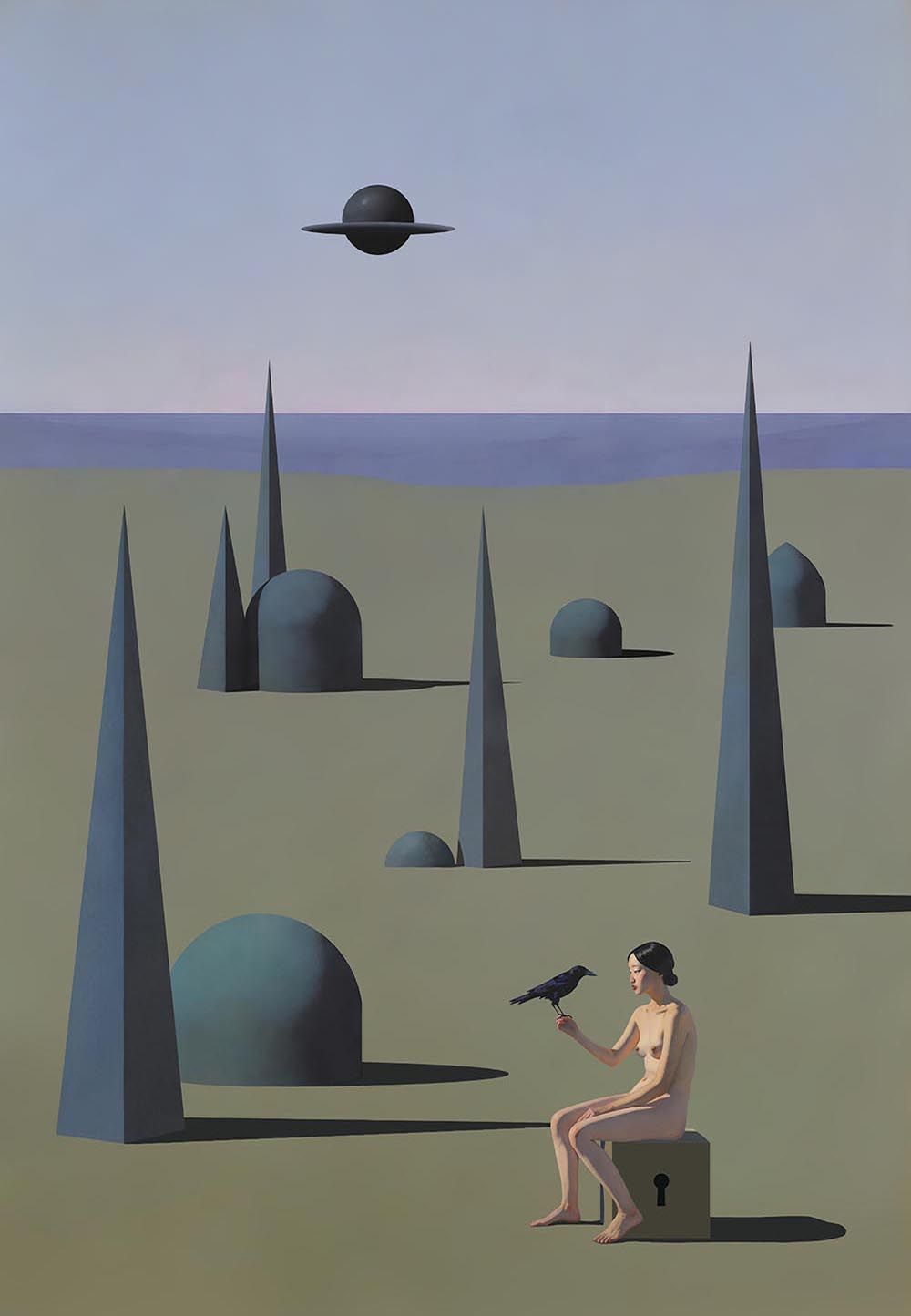
Echoes
In Echoes, a solitary figure sits on a sealed box marked by a keyhole – symbol of the unknown, the locked, the potentially liberating. A raven, perched calmly on her hand, becomes both companion and omen. She gazes at it not with fear, but with quiet introspection. Above her floats an enigmatic flying object, a distant echo of mystery in an already surreal landscape of pointed spires and soft domes – half-architecture, half-organic growth.
The scene is imbued with ambiguity: is she imprisoned by secrets, or guarding them? Is the key to the box – and to her freedom – within her reach, or forever out of sight? Her stillness suggests both control and melancholy. Perhaps the raven knows.
Echoes invites the viewer to project their own meaning onto its silence. Freedom, after all, may not be the absence of walls, but the understanding of one’s own mystery. And mystery, like freedom, is never the same for any two people.
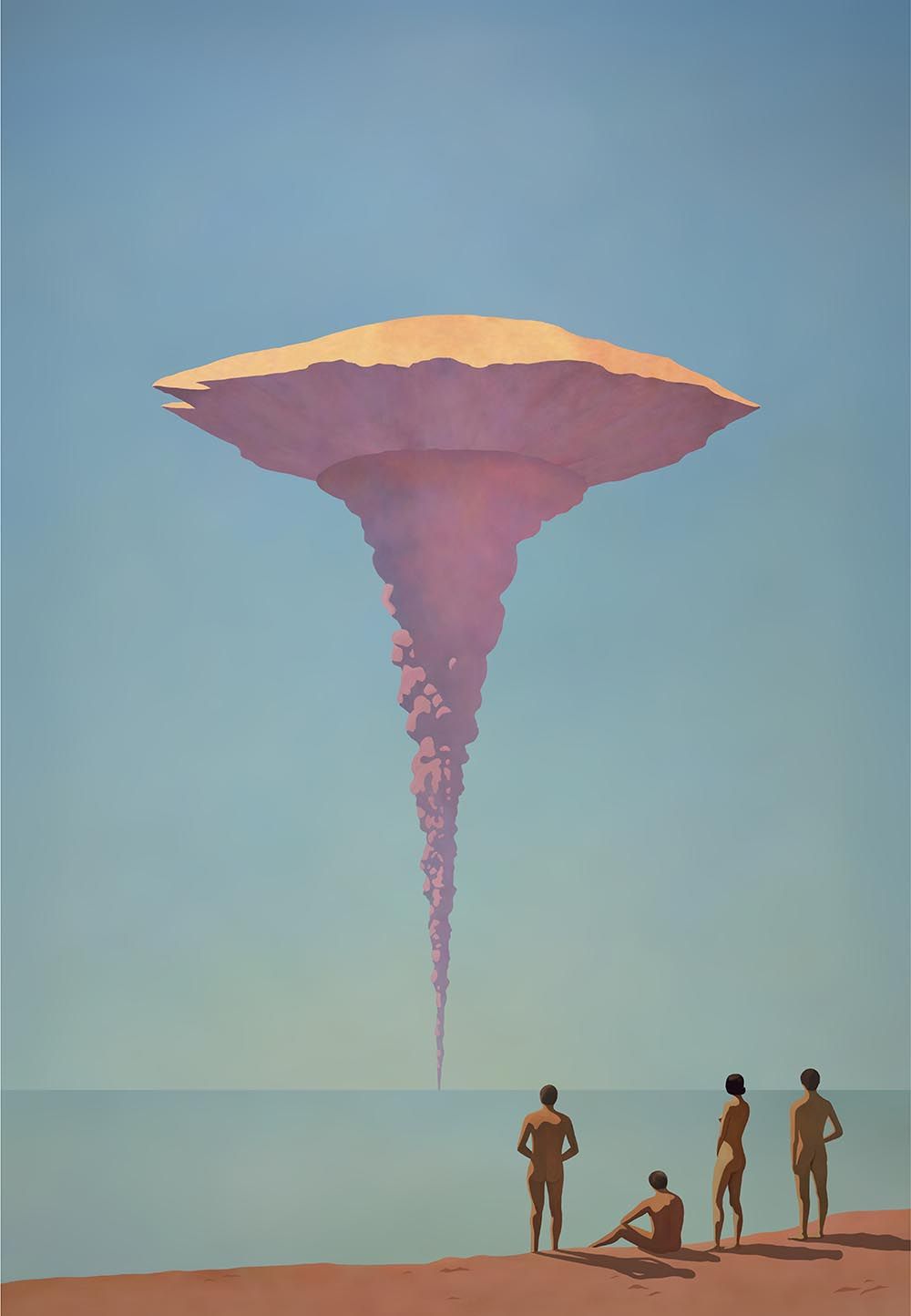
New World
In New World, a group of figures stands calmly at the edge of a tranquil sea, observing an immense mushroom cloud rising on the horizon. Despite the unmistakable suggestion of an atomic explosion, the beachgoers appear untroubled, almost contemplative, as if such apocalyptic spectacles have become part of the everyday. The scene is eerily still, yet deeply unsettling.
The work probes the tension between destruction and rebirth. The title itself hints at dual possibilities: a civilisation ending, or something new beginning. The explosion, rendered with softness and symmetry, resembles a monumental landform more than a violent act – solid, sculptural, almost sacred. Adding to the dissonance, the colour palette is light and almost cheerful, offering a false sense of serenity that contrasts with the implied devastation.
Minimal and serene in composition, New World captures the strange calm that often accompanies catastrophe once it becomes routine. It asks viewers to consider what it means to witness the end – or the beginning – without resistance, and what kind of world might emerge from that silence.
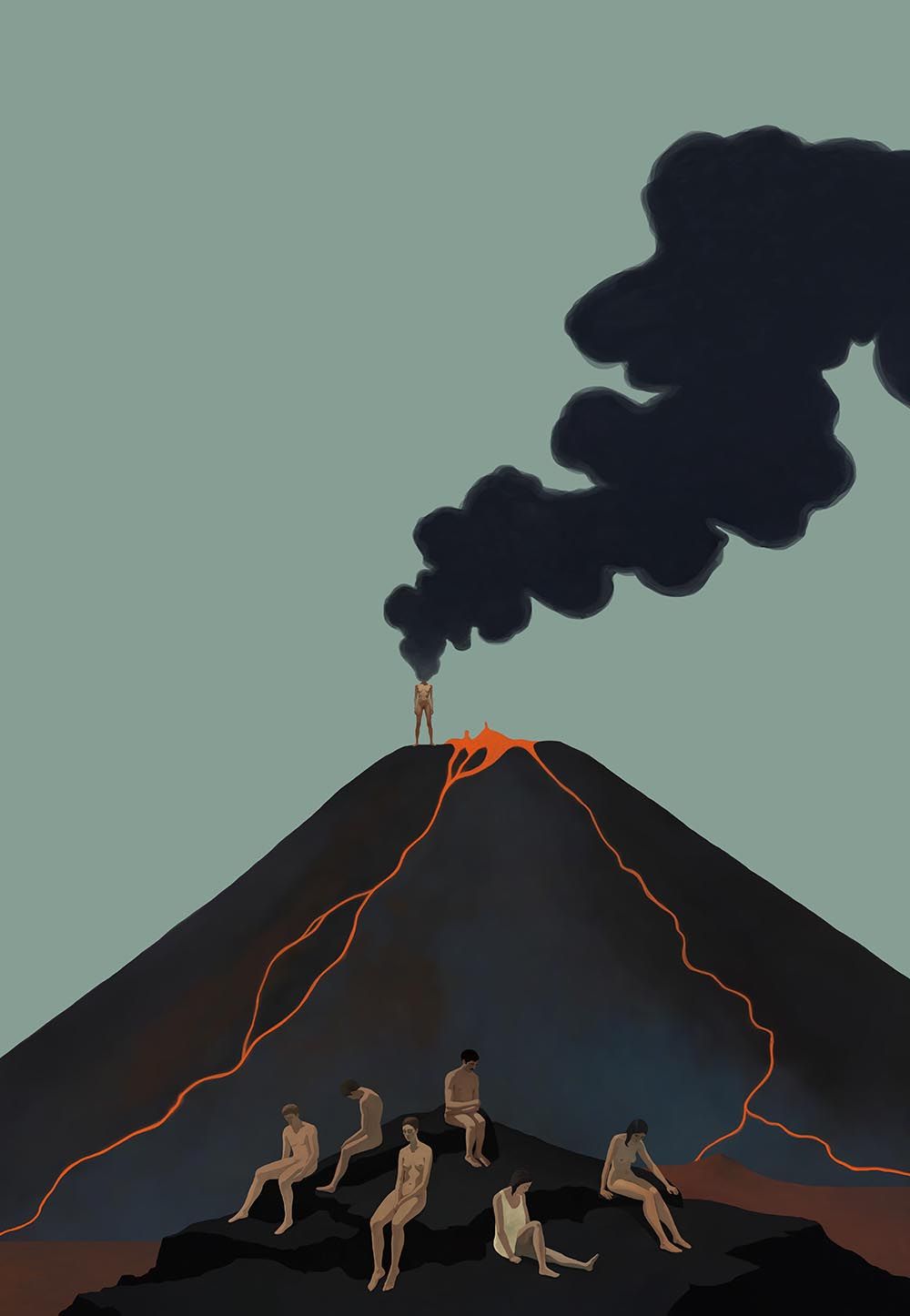
Waiting Room
Waiting Room presents a stark meditation on mortality. Figures sit motionless at the base of a dark volcano, their postures heavy with resignation. At the summit, one solitary figure stands upright in the path of flowing lava, engulfed in smoke, yet grounded and composed. There is no struggle, only stillness. The title itself speaks to the human condition — life as a prolonged wait for an inevitable end.
Somber tones dominate the composition, evoking depression and emotional inertia, while the bright lava cuts through the darkness like a warning. Danger is present, visible, even anticipated, yet none attempt escape. One figure is clothed, a subtle deviation, though it changes nothing. All are bound by the same fate.
The work resists illusion or comfort. It confronts the viewer with the quiet, shared knowledge that beneath our distractions and differences, we are all simply waiting for the final.
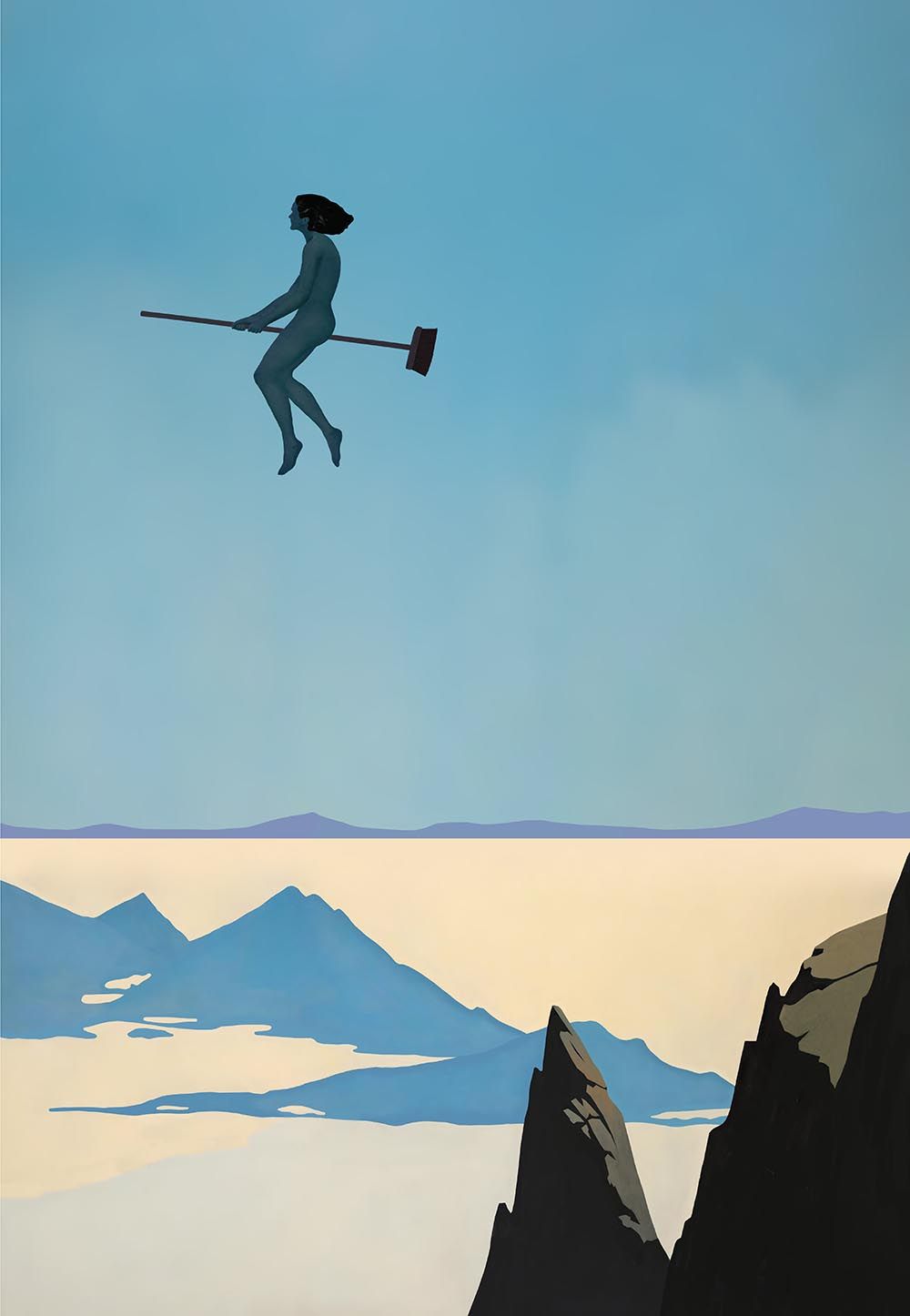
Margaret
Inspired by Bulgakov’s The Master and Margarita, this work reimagines Margarita’s iconic flight not over Soviet Moscow, but through an abstracted, timeless sky. Suspended mid-air, the figure rides a broom with calm resolve, silhouetted against a pale horizon and distant mountains. Stripped of context, her nudity and posture become emblems of vulnerability and defiance.
The broom, a symbol of domesticity transformed into a vehicle of power, echoes Margarita’s metamorphosis from a constrained life into one of agency and magic. This quiet yet assertive image speaks to liberation — a woman rising above a fractured landscape, reclaiming her narrative. Here, flight becomes an act of resistance, of self-possession, and of transcendence beyond the limits imposed by others.
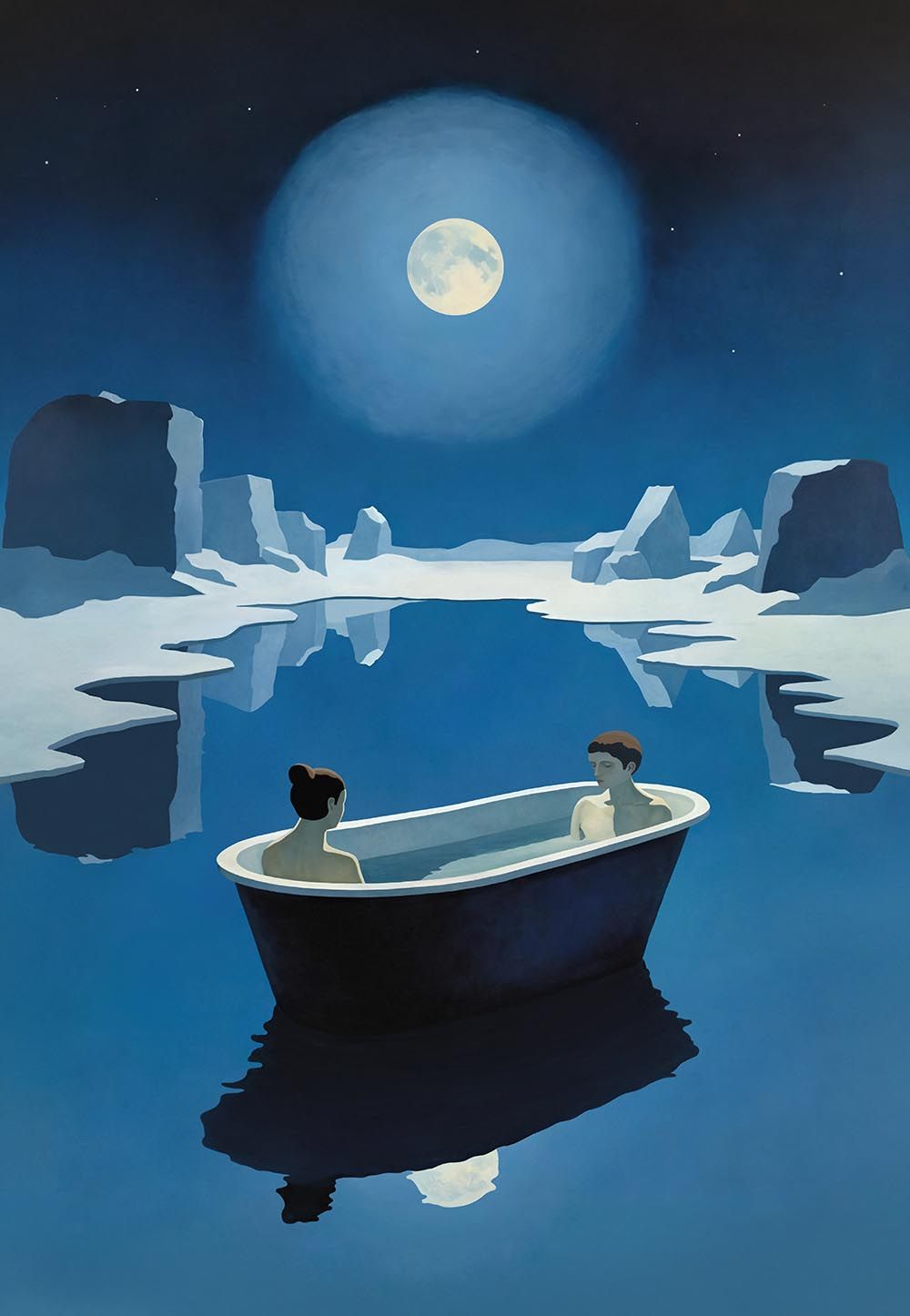
Mirror Memories
A couple sits quietly in a bathtub, adrift on still Arctic waters beneath a glowing full moon. Icebergs rise in the distance like frozen monuments, their reflections perfectly mirrored on the glassy surface. The bath — a symbol of warmth and intimacy — becomes a vessel through the vast and silent expanse.
This surreal scene is a metaphor for the quiet persistence of shared life. In the coldness of the world around them, the couple finds comfort in small, wordless moments. Mirror Memories reflects how intimacy is often built not in declarations but in the stillness between them — where warmth survives against the vast unknown.
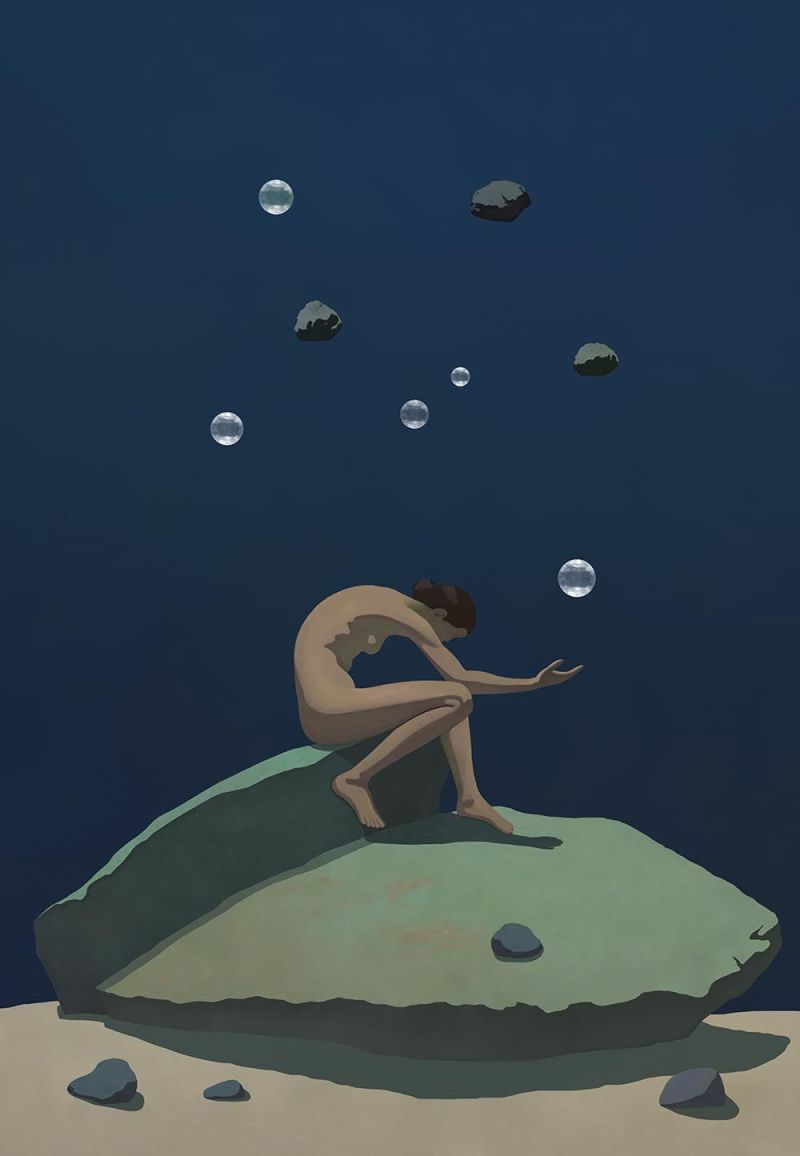
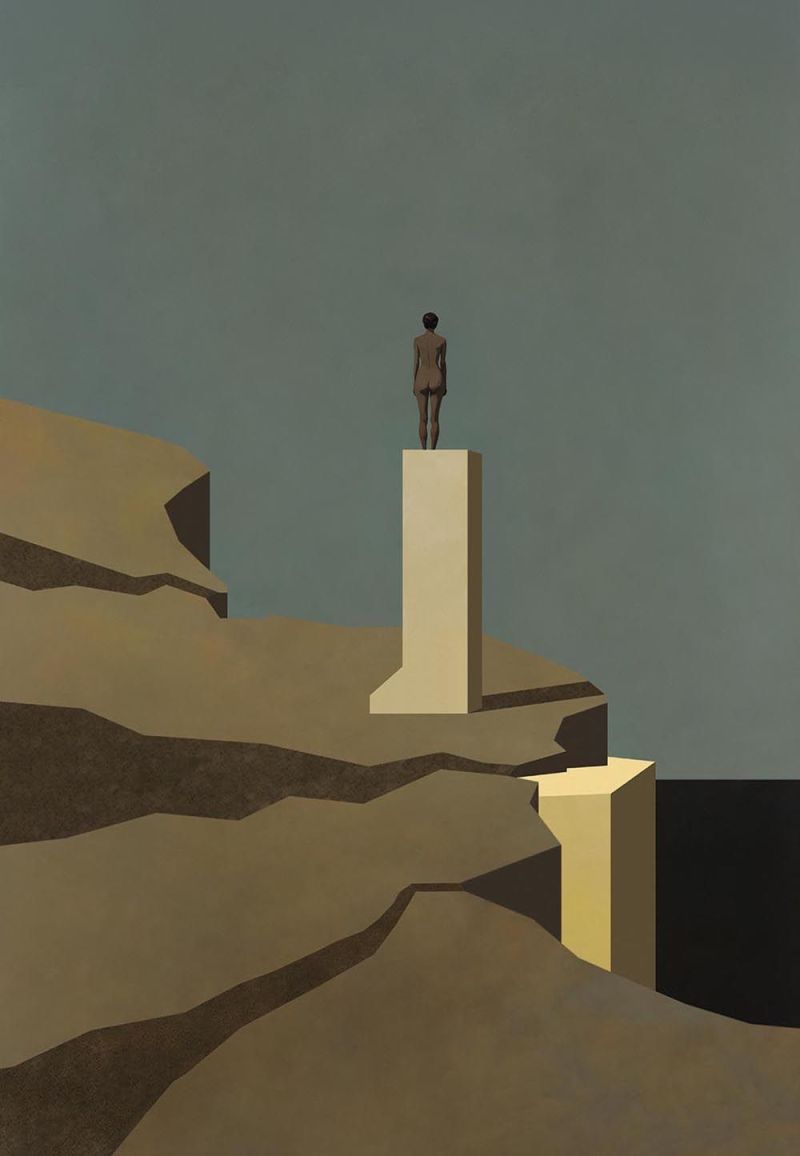
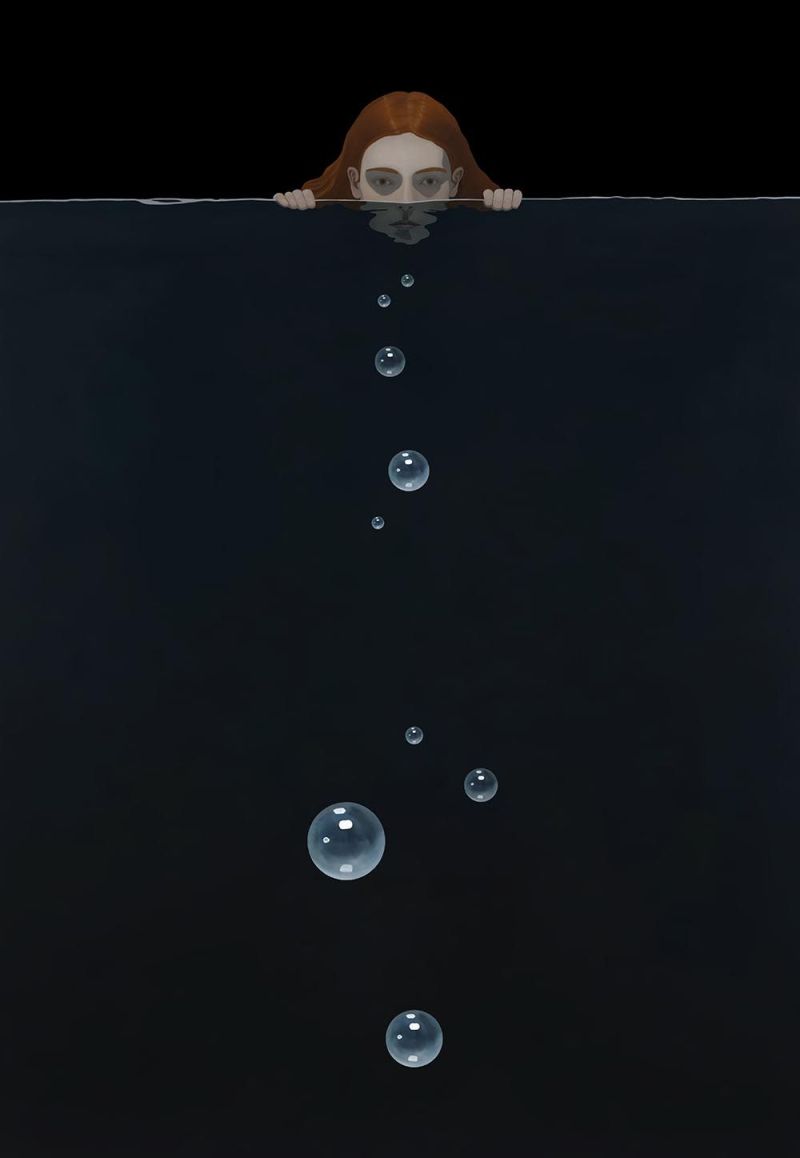
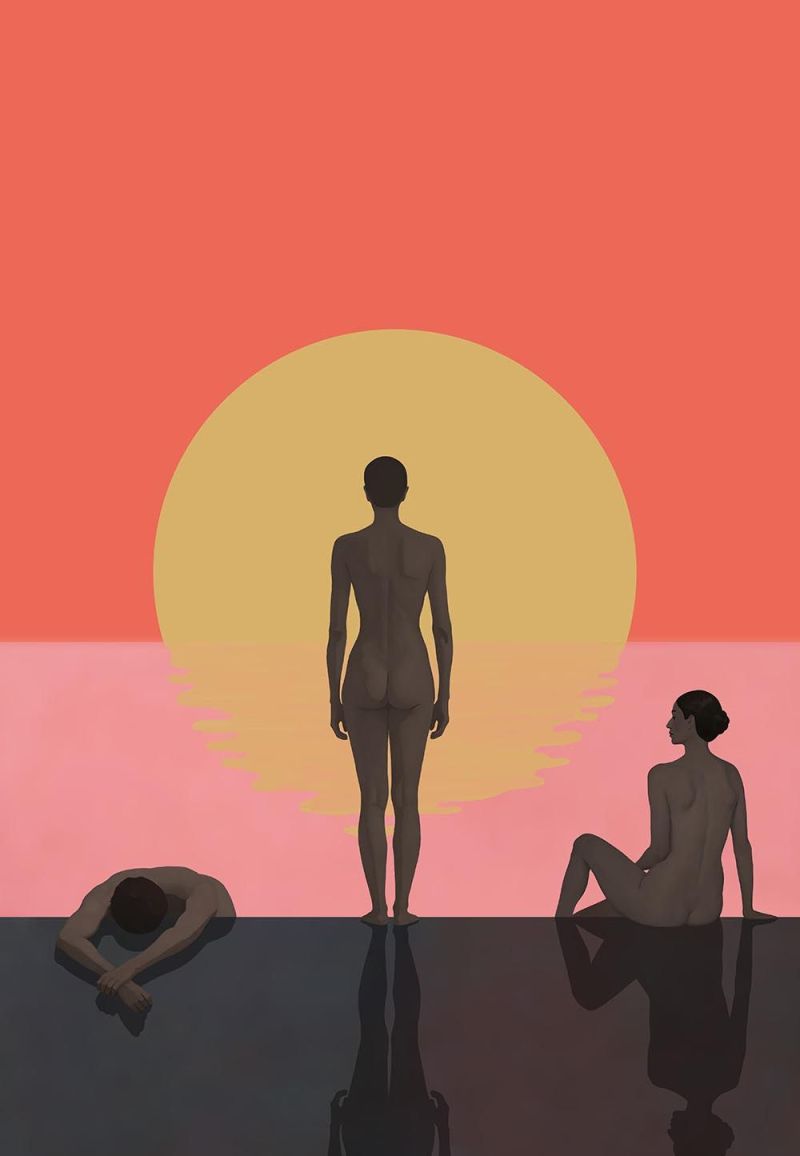
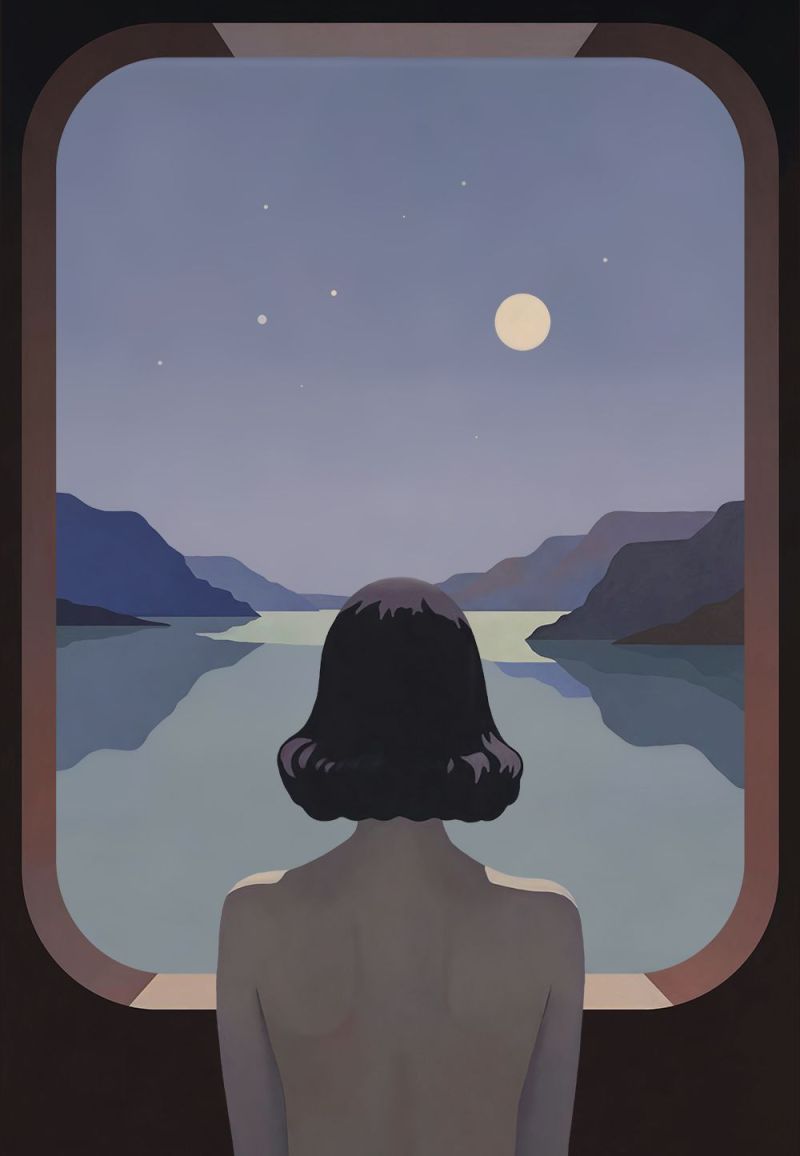
- –